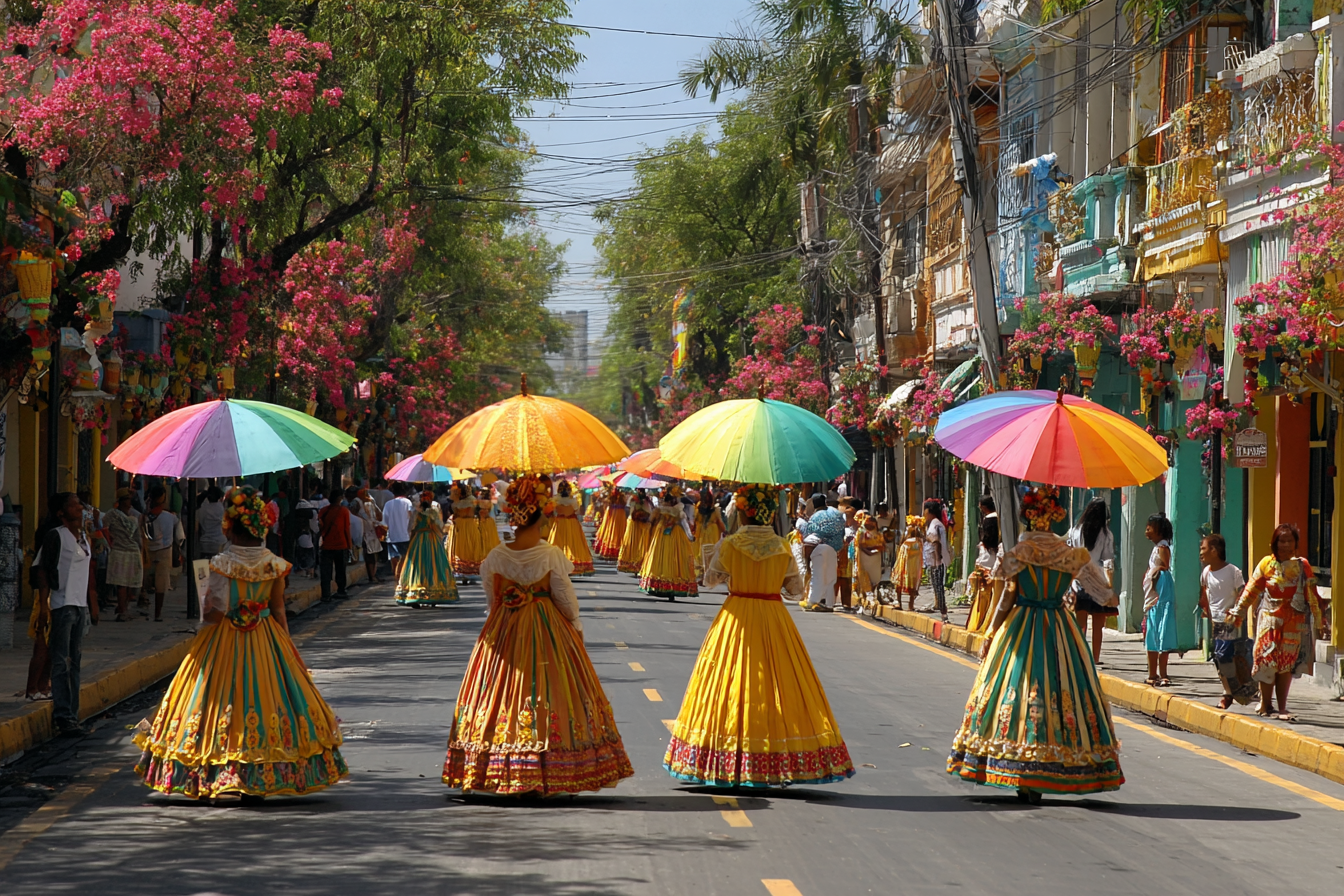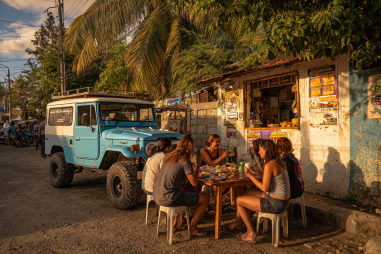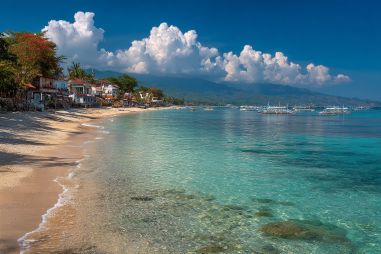Dumaguete, often known as the “City of Gentle People,” is not only famous for its serene coastline and vibrant academic community but also for its rich cultural heritage and festive spirit. The city comes alive throughout the year with colorful festivals and exciting events that showcase its unique local traditions, music, dance, and cuisine. These celebrations offer both locals and visitors a chance to experience the heart and soul of Dumaguete, making it an irresistible destination for culture enthusiasts and travelers alike. Whether you’re interested in energetic street parades, traditional performances, or savoring delicious local food, Dumaguete’s festivals provide an unforgettable window into its vibrant culture.
Major Festivals: Sandurot Festival and Buglasan Festival
Among Dumaguete’s many celebrations, two festivals stand out as the biggest and most anticipated: the Sandurot Festival and Buglasan Festival. Each festival highlights different aspects of the city’s history, community spirit, and cultural identity, making them essential experiences for visitors looking to immerse themselves in local life.
Sandurot Festival
The Sandurot Festival, which translates to “union” or “togetherness,” is celebrated every November to mark the founding anniversary of Dumaguete City. It honors the coming together of people from diverse backgrounds and celebrates unity within the community. During this festival, the streets and public spaces burst with lively parades featuring street dancers clad in bright and traditional costumes, showcasing movements inspired by local history and folklore.
The festival also highlights Dumaguete’s warm hospitality and the friendly nature of its people. Performers often include school groups, civic organizations, and cultural troupes that offer a rich mix of indigenous and contemporary dances. Sandurot Festival is a perfect time to feel the pulse of the city and engage with locals who love sharing their stories and heritage.
Buglasan Festival
Known as the “Festival of Festivals” in Negros Oriental, the Buglasan Festival is celebrated every October in Dumaguete. It is a grand showcase where towns and municipalities around the province bring their best cultural performances, crafts, and products to the stage. The name “Buglasan” comes from the old term for Negros Island, tying the festival deeply to local identity and pride.
Buglasan provides a perfect platform to witness a spectacular display of regional costumes, traditional dances, and music, as well as participate in various contests and exhibits. The festival goes beyond Dumaguete city limits but the city serves as the central hub, drawing in colorful crowds and visitors from all over. It’s not just a party but also an educational experience that highlights the historical narratives and social values of the different communities in the province.
Events Calendar and What to Expect
Dumaguete’s festival season typically shines brightest between October and November, where the combined energy of Buglasan and Sandurot creates a vibrant atmosphere. During these months, you can expect a calendar packed with a variety of events:
- Street parades with themed floats and energetic dance groups
- Traditional music performances featuring indigenous instruments
- Art and craft exhibits reflecting local skills and heritage
- Food fairs showcasing regional specialties and street foods
- Competitions in singing, dancing, and costume design
- Community workshops and seminars about cultural preservation
Outside of these main festivals, Dumaguete also hosts smaller events throughout the year such as the Pili Festival, celebrating the local pili nut harvest, and numerous religious fiestas that highlight the city’s spiritual traditions. Attending these gatherings allows visitors to immerse themselves in the local way of life and meet locals who are eager to share their customs.
Traditional Costumes and Performances
The traditional costumes donned during Dumaguete’s festivals are a feast for the eyes. Women often wear brightly colored, handwoven dresses called “patadyong” paired with intricately designed accessories, while men wear native barongs or costumes inspired by local history and folklore. The attention to detail in the costumes showcases the community’s dedication to preserving their cultural roots.
Festival performances include traditional dances that narrate stories of the past—tales of settlers, local legends, and historical events. Each rhythmic movement and well-choreographed formation reflects the values and narratives passed down through generations. Beyond dances, musical performances incorporate indigenous instruments such as the kulintang (a type of gong ensemble), flutes, and drums, adding an authentic soundscape to the festive ambiance.
Food and Activities During Festivals
No festival in Dumaguete would be complete without indulging in the mouthwatering local cuisine. Festival attendees can expect a range of Filipino delicacies, with a focus on Negros Oriental specialties. Popular dishes include fresh seafood caught from nearby waters, “lechon” (roasted pig), and savory street foods like “puso” (hanging rice) and “kwek-kwek” (battered quail eggs).
The food fairs held during these events are a vibrant marketplace offering not just traditional snacks but also opportunities to sample new culinary twists prepared by local chefs and home cooks. Beyond food, festival activities often include art workshops, traditional games, and souvenir markets where visitors can buy handcrafted products made by local artisans.
Participation Tips and Local Customs
Joining in Dumaguete’s festivals can be a highly rewarding experience, but understanding a few local customs and tips can help visitors make the most of their visit while showing respect to the community:
- Engage respectfully: Always ask permission before taking photos of performers or locals, especially during religious or solemn events.
- Dress comfortably: Festivals usually involve a lot of walking and standing. Wear light, breathable clothing and comfortable footwear. Traditional attire is encouraged only if locally invited or sold at events.
- Be on time: Parade and event schedules are typically followed closely. Arriving early is recommended to get good viewing spots.
- Support local vendors: Purchasing food, crafts, and souvenirs from local sellers directly supports the community and enriches your cultural experience.
- Learn basic greetings: Simple phrases in Cebuano, the local language, like “Maayong adlaw” (Good day) can build goodwill with locals.
Whether you’re cheering on a street dance troupe, sampling freshly grilled seafood, or admiring vibrant costumes, respectful participation enhances the joy and authenticity of the experience.
Experiencing Dumaguete’s festivals and events is more than just witnessing lively celebrations—it’s an invitation to connect deeply with the city’s rich cultural tapestry. From pulsating street parades to quiet moments spent savoring local delicacies, the city offers a warm welcome to all those eager to celebrate Filipino heritage in a genuine and heartfelt way. Plan your visit during the festival season and discover why Dumaguete truly stands out as a cultural hub in the heart of the Philippines.







